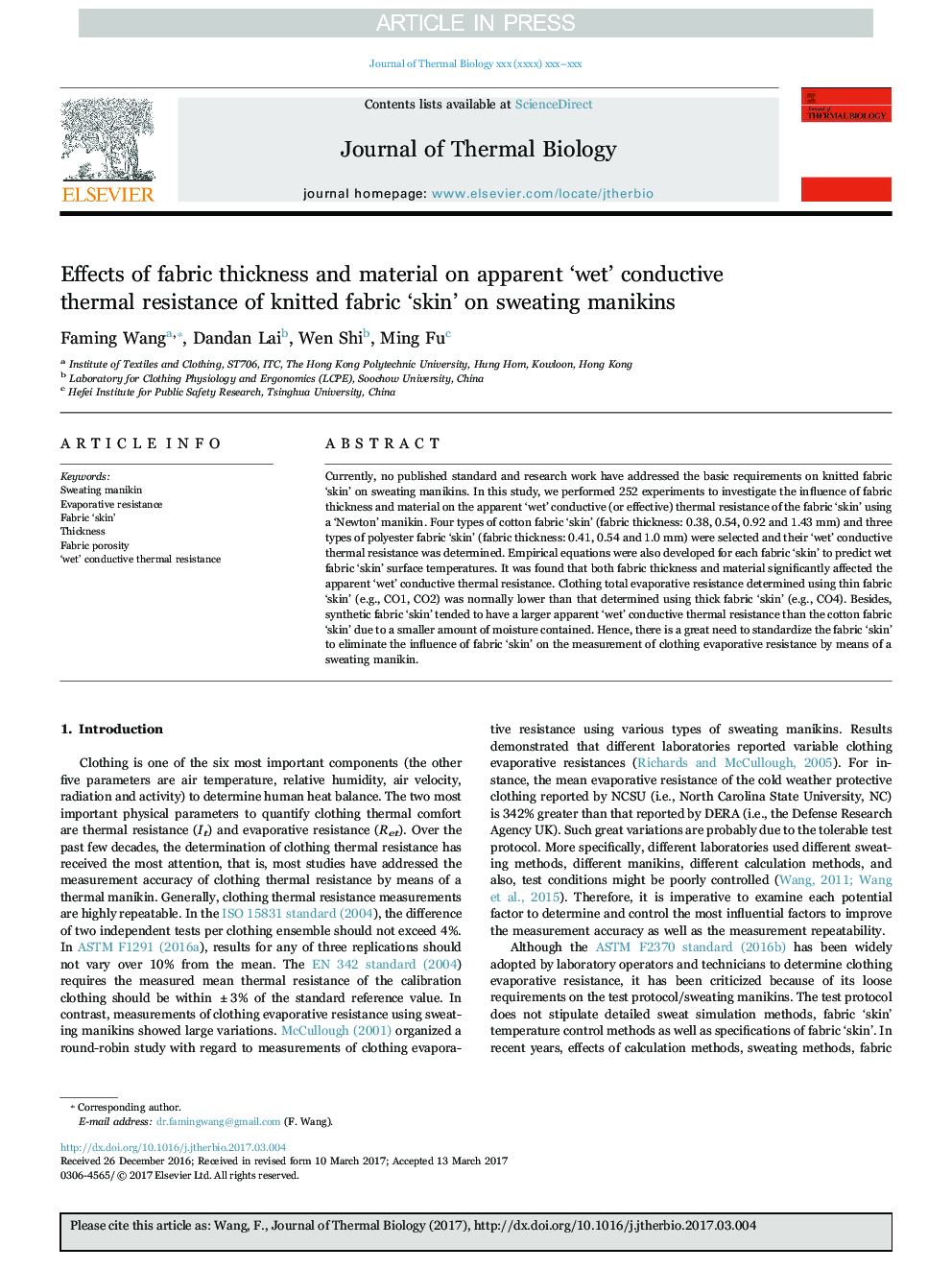| Article ID | Journal | Published Year | Pages | File Type |
|---|---|---|---|---|
| 8650193 | Journal of Thermal Biology | 2017 | 8 Pages |
Abstract
Currently, no published standard and research work have addressed the basic requirements on knitted fabric 'skin' on sweating manikins. In this study, we performed 252 experiments to investigate the influence of fabric thickness and material on the apparent 'wet' conductive (or effective) thermal resistance of the fabric 'skin' using a 'Newton' manikin. Four types of cotton fabric 'skin' (fabric thickness: 0.38, 0.54, 0.92 and 1.43Â mm) and three types of polyester fabric 'skin' (fabric thickness: 0.41, 0.54 and 1.0Â mm) were selected and their 'wet' conductive thermal resistance was determined. Empirical equations were also developed for each fabric 'skin' to predict wet fabric 'skin' surface temperatures. It was found that both fabric thickness and material significantly affected the apparent 'wet' conductive thermal resistance. Clothing total evaporative resistance determined using thin fabric 'skin' (e.g., CO1, CO2) was normally lower than that determined using thick fabric 'skin' (e.g., CO4). Besides, synthetic fabric 'skin' tended to have a larger apparent 'wet' conductive thermal resistance than the cotton fabric 'skin' due to a smaller amount of moisture contained. Hence, there is a great need to standardize the fabric 'skin' to eliminate the influence of fabric 'skin' on the measurement of clothing evaporative resistance by means of a sweating manikin.
Keywords
Related Topics
Life Sciences
Agricultural and Biological Sciences
Agricultural and Biological Sciences (General)
Authors
Faming Wang, Dandan Lai, Wen Shi, Ming Fu,
